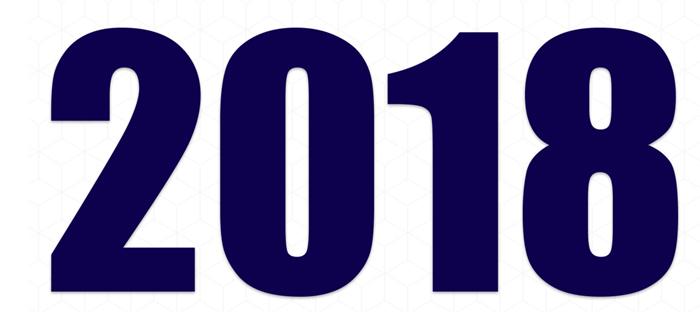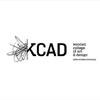
| Ranking | School | % |
|---|---|---|
| 1 | School of the Art Institute of Chicago | Top 2% |
| 2 | The Ohio State University | Top 4% |
| 3 | DePaul University | Top 6% |
| 4 | Columbus College of Art and Design | Top 8% |
| 5 | Minneapolis College of Art and Design | Top 10% |
| 6 | Columbia College Chicago | Top 15% |
| 7 | Bowling Green State University | Top 15% |
| 8 | Purdue University | Top 20% |
| 9 | College for Creative Studies | Top 20% |
| 10 | Cleveland Institute of Art | Top 25% |
| 11 | Kendall College of Art and Design | Top 25% |
| 12 | Kansas City Art Institute | Top 25% |
| 13 | Ball State University | Top 30% |
| 14 | University of Wisconsin, Stout | Top 30% |
| 15 | Ohio University | Top 35% |
| 16 | University of Illinois at Chicago | Top 35% |
| 17 | Bradley University | Top 35% |
| 18 | Grand Valley State University | Top 40% |
| 19 | Dakota State University | Top 40% |
| 20 | Webster University | Top 45% |
Our 2017 rankings of the top animation programs in the Midwest. We define the Midwest as Ohio, Michigan, Indiana, Illinois, Idaho, Wisconsin, Minnesota, Iowa, Missouri, Kansas, Nebraska, South Dakota, and North Dakota. For an explanation of ranking criteria, click here.

The School of the Art Institute of Chicago (SAIC) was founded in 1866, making it one of the oldest accredited independent schools of art and design in the country. Home to 3,650 students, the school offers more than 25 programs, including several options for aspiring animators. Animation programs are available through SAIC’s Film, Video, New Media, and Animation Department (FVNMA). Options include a BFA and MFA in Studio with a Concentration Animation. A Certificate in Studio is also available.
Students in the FVNMA Department have access to world class resources such as the Art Institute of Chicago Museum, on-campus galleries, and state-of-the-art facilities. Specifics include The Video Data Bank—the leading resource in the United States for videos by and about contemporary artists, The Gene Siskel Film Center—one of the country's premiere screening venues dedicated to promoting alumni, student, and faculty work, and The Donna and Howard Stone Gallery for Film, Video, and New Media in the Art Institute of Chicago's Modern Wing.

Established in 1870 as Ohio Agricultural and Mechanical College, The Ohio State University offers over 200 majors, minors and specializations from which more than 66,000 students can choose multiple paths to focus on animation in both the College of Arts and Sciences and the College of Engineering. Paths in animation encourage students to explore courses in 3D modeling, 2D/3D animation, video game production, augmented and virtual reality, digital imaging, digital video, interactive visualization, interactive art, game art and design, Art Games, motion capture, procedural content generation for games, real-time rendering, photogrammetry and more at both the undergraduate and graduate levels. Students in all programs can work on individually defined or team-based projects.
The Department of Art offers BFA and MFA degrees in Art with an emphasis in Art and Technology. It emphasizes the creation of animation, interactive art and experimental forms in the context of art making.
The Department of Design offers an MFA degree in Design focusing on Digital Animation and Interactive Media. This program emphasizes the production of creative research-based projects in the user-centered context of design.
The Department of Computer Science and Engineering (CSE) offers BS, MS and PhD degrees in Computer Science with a specialization in Computer Graphics and Game Design.
Ohio State introduced an interdisciplinary BA program in Moving Image Production in Autumn, 2017.
Students utilize state of the art facilities, equipment, and interdisciplinary expertise in the school’s many special labs, including the world class Advanced Computing Center for the Arts and Design (ACCAD).

DePaul University (est. 1898) offers 300 programs of study across 10 colleges and schools and two campuses in Chicago. The school serves 22,769 students from across the U.S. and about 70 countries. The DePaul Animation Program in the School of Cinematic Arts, part of the College of Computing and Digital Media, offers BA, BFA, MA, and MFA degrees in Animation, with the following concentrations: Game Art, Traditional Animation (hand-drawn and stop motion), 3D Animation, Storyboarding and Character Design, Technical Artist, and Motion Graphics, and a VFX concentration is available within the Film and Television BFA. With thirteen full-time Animation professors, DePaul has one of the largest full-time Animation faculties in the US.
DePaul Animation students can apply to participate in the Animation Summer LA Quarter, a ten-week immersion program structured around living in student housing, taking classes on a historic studio lot, and interning at high profile animation studios. The experience teaches students how to navigate the studio system and helps them build a network of professional contacts. Past participants have interned at Warner Brothers, DreamWorks Animation, Sony Studios, Disney, Nickelodeon, The Mill, The Jim Henson Company, Titmouse Animation, Bix Pix Animation, and others. DePaul University also offers a Game, Cinema and Animation Summer Academy for high school students interested in animation, with tracks in hand-drawn, stop motion, and 3D animation for games.

Columbus College of Art and Design (CCAD) was established in 1879, making it one of the oldest private art and design colleges in the U.S. The school is home to more than 1,300 students enrolled in 12 bachelor’s degree and two master’s degree programs covering a broad range of subjects. Programs for aspiring animators include an Animation BFA with 2D and 3D Tracks or a Concentration in Animation/Experimental or Animation/Game. Minor options include Animation 2D and Animation 3D. An MFA program is also available. Students in this program have executed individual projects from animation and video to interactive design and illustration.
All students may participate in CCAD’s International Exchange Program, which highlights study at China Academy of Art, Hangzhou, China; Universidad Mayor, Santiago, Chile; Xi’an Fine Arts Academy, Xi’an, China, and Northumbria, Newcastle, England. Students may also study at CCAD-approved programs at Studio Art Centers, Florence, Italy, and University of Arts London, London. Graduates of the CCAD Animation BFA Program have landed positions at Animal Logic, Pixar, Walt Disney Animation Studios, DreamWorks, Cartoon Network, Electronic Arts, Nickelodeon Animation Studios, Sony Pictures Animation, BET, Time Warner, Twentieth Century Fox, and many others.

Established in 1886, Minneapolis College of Art and Design (MCAD) was is home to more than 750 students from 29 states and 12 countries. The school offers more than 20 programs across several departments. The Animation Department offers a BFA in Animation and an MFA in Visual Studies. The BFA Program highlights courses such as Stop-Motion Animation, Character Animation, 3D Animation, 3D Modeling, Filmmaking, Storyboard, Sound, and Drawing. A required internship is also part of the program as well as optional study abroad experiences in Japan, Germany, England, Italy, and other places. MCAD students have interned at Nickelodeon, MTV, Walker Art Center, and Massachusetts Museum of Contemporary Art.
Housed in an all-MFA studio and gallery space, the MFA Program allows students to pursue creative work in areas such as Animation, Comic Arts, Filmmaking, Illustration, Installation Art, and Interactive Media.

Columbia College was established in 1890 and it serves more than 7,000 undergraduate students and 285 graduate students from nearly every state and more than 60 countries. The school has over 100 academic majors or programs across several schools and more than 20 departments. Schools include the School of Media Arts, the School of Fine and Performing Arts, and the School of Liberal Arts and Sciences. The School of Media Arts is home to the Interactive Arts and Media Department, which offers several programs for animators.
Options include BA degrees in Animation with a Concentration in Computer Animation or Traditional Animation, and BFA degrees in Computer Animation and Traditional Animation. Animation and Motion Graphics Minors are also available.
Computer Animation students have the option to focus in Visual Effects or Computer Animation. Traditional Animation students may focus in either Hand-Drawn or Stop-Motion Animation. Students in the BA programs and the BFA in Traditional Animation have the opportunity to either work collaboratively with peers to create a six-minute animated film over two semesters or take any three Animation electives of their choosing. Computer Animation BFA students will collaborate on a team project and develop their own solo short film.

Founded in 1910, Bowling Green State University (BGSU) is home 19,000 students, including 2,500 at BGSU Firelands in Huron, Ohio. The school offers more than 200 undergraduate majors and programs on the main campus and 22 at BGSU Firelands. The school houses nine colleges, including the College of Arts and Sciences, home of the School of Art. The School houses the BGSU Digital Arts program, which offers a BFA in Digital Arts and a BA in Art with a Digital Arts Specialization. The BA program has three Focus Areas including Computer Animation & Video, Imaging, and Interactive Multimedia.
An MFA in Art with a Major in Digital Arts (Computer Animation, Digital Imaging, and Interactive Media) is also available, as well as a Minor in Digital Art. The MFA program is an intensive, 60-credit studio degree designed to prepare students to become both professional artists in industry and university-level instructors while developing their own studio practice. Students have the opportunity to explore 3D Modeling and Animation, Interactive Multimedia Development, Digital Video, Digital Imaging, and Hybrid Media forms including 3D printing, Architectural Projection Mapping, Web App Development and Interactive Installation Art.
The Digital Arts program offers internship opportunities and study abroad experiences to all students in more than 40 countries worldwide.

Established in 1869, Purdue University is home to more than 41,500 students from all 50 states and nearly 130 countries. Part of Purdue University, Purdue Polytechnic Institute was founded in 1964 as Purdue University College of Technology. Around 12% of Purdue’s students are enrolled in the Polytechnic Institute, which houses eight departments and schools that offer 68 academic options in six subject areas. The Department of Computer Graphics Technology (CGT) offers animation programs at all degree levels.
The BS in CGT with a Major in Animation focuses on six areas of animation including 3-D Modeling, Texturing, Lighting, Rendering, Character Rigging (creating a digital skeleton) and Motion. Graduates of the BS program have found employment at DreamWorks, Walt Disney Company, and Rhythm & Hues and eight of the school’s alumni were part of the creative teams behind 2014 Oscar winner Big Hero 6 and 2014 Golden Globe winner How to Train Your Dragon 2.
The CGT Department also offers a BS in CGT with a Major in Visual Effects Compositing that combines Animation, Visual Effects, and Video to create “highly graphical” videos for episodic television and films. A BS in Effects Technical Direction is also available and it highlights supplemental coursework in Animation. Graduates of the program have also landed positions at DreamWorks, Walt Disney Company, and Rhythm & Hues.
Graduate offerings include an MS in CGT and a PhD in Technology offered through the Department of Computer and Information Technology (CIT). The MS offers several focus areas for aspiring animators including Computer Animation, Video Production and Visual Effects, Computational Art, and Virtual and Augmented Reality. The PhD Program offers a CGT Specialization that covers Animation, Game Studies, Human Centered Design and Development, Virtual Product Integration, and Web Programming and Design. Students may also earn a BS CGT/MS Technology with a Specialization in CGT, which may be completed in just five years instead of six years or more if pursued separately.

The College for Creative Studies (CCS) was founded in 1906 and serves more than 1,400 students enrolled in over a dozen degree programs across 14 academic departments. Serving 285 students, Entertainment Arts is the school’s largest department, and it offers a BFA in Entertainment Art with a Concentration in Animation. All Entertainment Art students have the opportunity to customize their curriculum by taking coursework in other concentrations such as Digital Film or Game Design.
Graduates of the CCS Animation Program have been hired at major studios across the U.S. such as Sony Pictures Imageworks, DreamWorks Animation, and Disney ABC Television Group.

Cleveland Institute of Art (CIA) is an independent college of art and design that serves 615 students from around the globe. Established in 1882, the school offers 15 majors in Art, Craft, Design, and Interactive Media. Programs for aspiring animators include a BFA in animation that features an integrated curriculum focusing on sequential narrative storytelling, methods of animation, conceptual development, framing and staging, storyboarding, animatics, layers, and motion and figure studies. Students can expect to take courses such as Advanced 3D Animation, Mapping, Digital Lighting, 2D/3D Compositing for Animation, 3D Texture, and Concept Development,
The CIA Animation Program prepares graduates for positions such as Animator, 3D Character Animator, Storyboard Artist, Independent Filmmaker, Concept Artist, and Game Designer.

Kendall College of Art and Design, Ferris State University (KCAD) was founded in 1928. The school serves more than 1,200 students enrolled in around 24 BFA, BS, MA, MFA, and Certificate programs. KCAD offers a BFA in Digital Art and Design that allows students to work in one of two focus areas including Entertainment Art (animation, digital 3D, visual development for games and animation, and sequential arts like comics and storyboards) and Multimedia Design (interaction design for the web, apps, virtual reality, the internet of things, and video and motion design animation).
Students in the program will gain knowledge and hands-on experience via high-end equipment and on-campus facilities such as Cintiq Studios and a wide range of cameras, microphones, and lighting equipment, and via access to The Dow Center FlexLab, and KCAD Library. Graduates will leave the program with the skills and experience needed to pursue career paths in areas such as 2D animation, 3D game art, visual development, interaction design, and motion design.

Established in 1885, Kansas City Art Institute (KCAI) trained students such as Walt Disney (who took Saturday Classes as a child), and multimedia artist Robert Rauschenberg. Today, the school serves more than 700 students, enrolled in 13 art and design programs across several departments. The Department of Converging Media houses the school’s animation program, which leads to a BFA.
The Animation BFA highlights intensive instruction in classical, experimental and computer animation. Students in the program work in technologically integrated classrooms and studios to produce a significant personal work. The Department of Converging Media houses Filmmaking, Interactive Arts, and Photography, so animation students also work in an environment that facilitates creativity and cross-disciplinary approaches to image making.
Sequential classes emphasize the creative process by combining aspects of animation principles, concept modeling, production methods, history, theory and technique into each project. Students will gain experience through internship opportunities at major studios such as Walt Disney Animation Studios, DreamWorks, Digital Domain, Nickelodeon, Hallmark, Bazillion Pictures, Titmouse Inc., and many others.

Established in 1918, Ball State University enrolls around 22,000 students from every state, two U.S. territories, about 55 countries, and every Indiana county. The school has more than 300 programs across 10 colleges. The College of Fine Art, School of Art offers several programs for aspiring animators. Offerings include BFA in Studio Art with an Emphasis in Animation and an MFA in Animation.
The BFA program explores 3D animation, stop-motion, and traditional 2D animation. Sample courses include Character Design, Drawing for Animation, Animation Production, 3D Modeling and Rendering, Animation Specialty, Character Design, 3D Animation, and Storyboarding. The program prepares students to work in Film and Television, Video Games, Advertising, Product Visualization, Medical Animation, and Architectural Rendering.
The MFA in Animation focuses on traditional and modern animation techniques, storytelling, and film production through the creation of a short film as the thesis project. Sample courses include Advanced Animation, Animation Studio, and Teaching Studio Art. Students will gain comprehensive knowledge of animated films from their conception to realization, learn about the history of animation while considering critical artistic issues, and acquire in-depth knowledge of animation software, and the elements of digital media.

Established in 1891 as The Stout Manual Training School, University of Wisconsin – Stout (UW-Stout) is a Polytechnic University that serves more than 9,500 students from the U.S. and 47 countries. The school offers 45+ undergraduate majors and 20+ graduate programs across three colleges and six schools. The School of Art And Design offers a BFA in Entertainment Design with Concentrations in Animation, Comics and Sequential Art, and Digital Cinema.
Sample courses for the BFA program include Animation Studio, 3D Modeling and Animation, 3D Game Art and Engines, Digital Cinema Studio, Typography in Motion, Comics and Sequential Art, Video Production, and Graphic Design. The program prepares students to enter the industry immediately or to enroll in a MFA program. The School of Art and Design’s MFA in Design is a cross-disciplinary program that consists of study in the areas of Entertainment Design, Studio Art, Game Design, Interactive Media, Graphic Design, and more. Courses for the program are delivered through a variety of methods including on-site courses, online, evening, weekend and intensive summer courses. Graduates of the program will be prepared to pursue roles in the academic community and as design professionals and leaders.

Ohio University was established in 1804 as Ohio’s first university. The school serves 38,651 students enrolled in more than 300 programs across 11 colleges. The E.W. Scripps College of Communications houses the School of Media Arts. Home to nearly 700 undergraduates, the School offers a BS in Communication with an Emphasis in Games & Animation.
The program encourages students to explore the production of computer animation and digital games, while also providing an understanding of the management and leadership roles in these industries. Sample courses include Modeling & Animation, Narrative Animation, Visual Storytelling, Screenwriting, Compositing, Motion Graphics, Video Game Design, Video Production, Game Development, Media Content Management, Sound for Moving Images, and Media Arts Management (FILM), to name a few.

University of Illinois at Chicago (UIC) was formed in 1982 “by the consolidation of two U. of I. campuses: the Medical Center campus, which dates back to the 19th century and the comprehensive Chicago Circle campus which replaced, in 1965, the two-year undergraduate Navy Pier campus that opened in 1946 to educate returning veterans.” Today, with more than 35,500 students enrolled in 250 degree programs and 53 certificate programs across 15 colleges, UIC is the largest university in the Chicago area.
The College of Architecture, Design, and the Arts (CADA) houses the School of Art & Art History, which offers BFA and MFA degrees in New Media Arts and Moving Image, and a dual MS in Computer Science/MFA in New Media. An Art Minor is also available and all programs feature animation coursework. Sample courses include Computer Animation, Film, Computer Graphics, Virtual Reality, 3D Space: Modeling, New Media Arts, Motion Graphics, 3D Space: Animation, Drawing, Interactive 3D, and Human-Computer Interaction.
The College of Applied Health Sciences, Department of Biomedical and Health Information Sciences (BHIS) offer another option for students that might be interested in a career that fuses science, medicine, and animation. The MS in Biomedical Visualization (BVIS) offers animation electives such as Interactive 3D, Modeling, Animation I &II, Illustration Techniques, Medical Legal Visualization, and Graphic Design.
The BVIS is the largest and second oldest of four accredited programs of its kind in North America. Graduates of the BVIS program become highly skilled science visualization specialists in medical illustration, animation, interactive media, gaming, haptics, and virtual and augmented reality, working on the frontiers of discovery.

Founded in 1897, Bradley University is home to 5,400 students enrolled in more than 185 undergraduate programs and 30-plus graduate programs across eight colleges and schools. Slane College of Communications & Fine Arts is home to the Department of Interactive Media, which offers several programs for animators. Options include a BFA in Animation & Game Design, and BS/BA degrees in Animation or Interactive Media. Game Design and Interactive Media Minors are also available.
Program highlights include guest speakers, internship opportunities, and access to the Interactive Media, Animation Research, and Game Design Research Labs. Students also have access to the InterMedia Center and they have the opportunity to present a project at the department’s year-end show, FUSE.

Established in 1960, Grand Valley State University serves more than 25,000 students from the U.S. and 84 different countries. The school offers 130 degrees across eight colleges. The College of Liberal Arts and Sciences is home to the School of Communications. Housed within the School of Communications is the Department of Visual & Media Arts, which offers a BA or BS in Film and Video Production.
Students can expect high-impact learning opportunities outside the classroom through internships and local production projects, opportunities to present work through regularly scheduled public screenings, and a peer-reviewed academic journal, and hands-on experience by producing projects for real clients in and outside of the classroom. Courses of study include Animation, Documentary, Fiction, Film Studies, New Media, Nonfiction, Scriptwriting, and Sound Design.

Dakota State University (DSU) was established in 1881 as a school for teacher education in the Dakota Territory. Today, DSU serves 3,307 students enrolled in more than 35 majors and over a dozen graduate degrees and certificates across four colleges including the College of Arts and Sciences, the College of Business and Information Systems, Beacom College of Computer and Cyber Sciences, and the College of Education.
The College of Arts and Sciences offers a BS in Digital Arts and Design with a Focus in Production Animation and a IS Management: Multimedia Certificate. Students in the BS program will work with current software and video production equipment on projects that mimic real-life experiences. They will learn how to create and edit 2D and 3D characters in a digital environment, as well as digital editing and storyboarding. In the end, graduates will have the experience to work with animated digital videos at a professional level. Possible job titles include Animator, 3D Graphic Designer, Broadcast Design Artist, and TV/Film Effects Artist.
Students entering the Multimedia Certificate program will already have a solid understanding of animation, digital design, and audio production. Students will work with digital software and equipment in four courses that will help them create 2D and 3D graphics, animation, and digital audio recordings. Those who complete the program will leave with a digital portfolio and demo reels. These individuals will be prepared to transfer into a bachelor’s degree program or seek a position in animation, graphic design or broadcast/multimedia.

Founded in 1915, Webster University is home to more than 17,000 students studying at campuses in North America, Europe, Asia, Africa, and online. The school houses five colleges and schools including the College of Arts & Sciences, Leigh Gerdine College of Fine Arts, George Herbert Walker School of Business & Technology, the School of Communications, and the School of Education. The School of Communications (SOC) is home to the Electronic and Photographic Media Department, which offers BA degrees and a Minor in Film, Television and Video Production, Interactive Digital Media, and Animation.
The Department also offers an MA in New Media Production with courses such as Digital Graphics and Motion Graphics Production, Digital Design and Information Graphic Production, Written Storytelling, Digital Images and Storytelling, Video Editing, Interactive Communications, and Visual Storytelling. For students who wish to earn a certificate, undergraduate options include Animation Production, Digital Media, Interactive Digital Media, Motion Graphic Design, and Game Design. Graduate certificates include Advanced New Media Production and Fundamentals of Multimedia Production.
All programs feature small classes, hands-on experience with equipment and resources early in the program, and collaboration across disciplines within the SOC and across the University. Students also have access to internship opportunities, and assistance with portfolio development.

